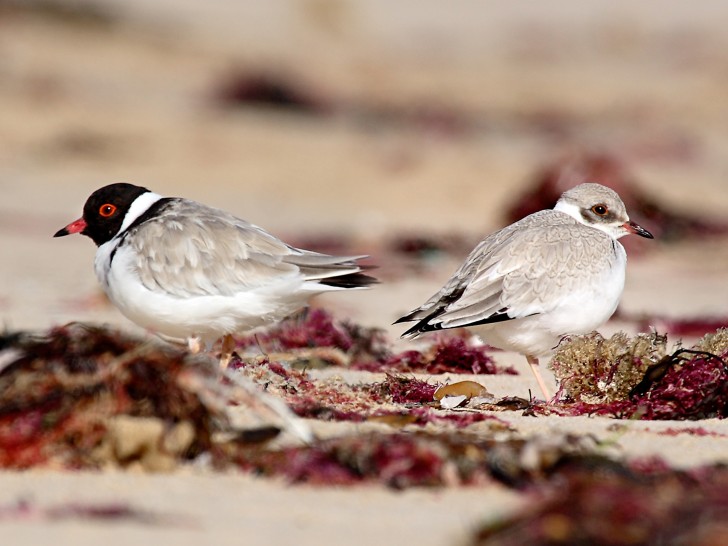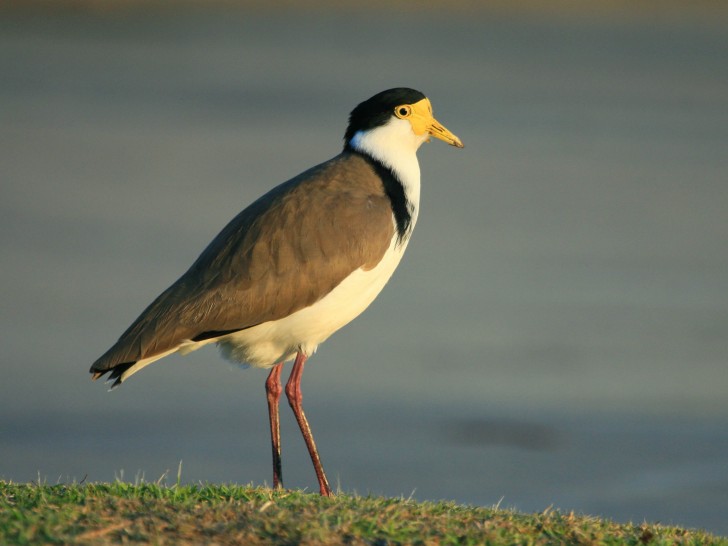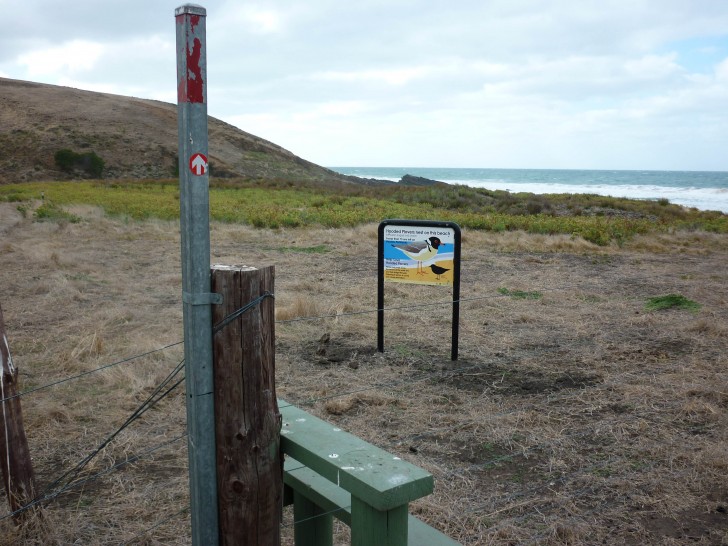The Hooded Plover is a small bird found on Australia’s southern ocean beaches, including the Fleurieu Peninsula. Walking along the beautiful beaches of the Heysen Trail: Waitpinga, Parsons, Sheepies (Shannon’s Gully), Coolawang, Tunkalilla and Lands End, you have probably walked right past these well-camouflaged birds.
Yes, that’s right, the beach, between the high-tide mark and the base of the foredune. And it’s for this reason that Hooded Plovers have one of the lowest rates of chick survival in the world.
They spend their entire life on the beach, and they also lay their nests on the beach. Yes, that’s right, the beach, between the high-tide mark and the base of the foredune.
Sometimes they will nest on the dune itself, but usually on the beach above the high-tide mark.
The nest is a very simple scrape in the sand, with one to three very-camouflaged eggs.
They lay their eggs from August through to March – spring and summer – the busiest time on our beaches, so you can imagine the range of threats they face during the breeding season.
And it’s for this reason that Hooded Plovers have one of the lowest rates of chick survival in the world.
Hooded Plovers and the Heysen Trail – how you can help

If you see one of these signs on your walk, please walk at the water’s edge (if it is low tide) or above the beach and dunes on higher ground at high tide. Photo by Emma Stephens
Let’s share the beach! During the breeding season, when walking along these beaches, please stick close to the water’s edge or walk behind the beach and dunes on higher ground at high tide.
If you unknowingly sit near a nest or chicks, you will inadvertently cause the Hooded Plover to come off its nest, or send its chick into hiding. This means the eggs and chicks will be left vulnerable to the elements and predators, and chicks will go hungry.
A fantastic group of volunteers “The Friends of the Hooded Plover – Fleurieu Peninsula” monitor the breeding success of these birds.
When a nest is found temporary fencing and/or signage will be installed on either side of the nest.
Natural Resources Adelaide and Mt Lofty Ranges staff and volunteers are in the process of installing permanent signage at beaches where Hooded Plovers breed.
Please look out for this signage and fencing and avoid these areas by walking at the water’s edge or above the beach and dunes on higher ground at high tide.
Hooded Plover fast facts
- Hooded Plover or “Hoodie” (Thinornis rubricollis)
- Vulnerable in SA where there are around 600 birds
- Fewer than 70 Hooded Plovers are found on the Fleurieu Peninsula
- There are approximately 25 breeding pairs on the Fleurieu Peninsula.
- Length: 19-23cm
- Height: 10cm (smaller than a seagull)
- Wingspan: 36-44cm
- Weight: 90-100g
- Hoodies lay 1-3 camouflaged eggs on the beach and incubate for about 28 days.
- Once hatched, chicks have to feed themselves from day 1.
- They have to grow from the size of a 20c coin to the size of an adult in 5 weeks!
- They cannot fly until 5 weeks of age.
There are a few types of plovers. Hooded Plovers live and nest on the beach and won’t swoop you. A larger type of plover, the Masked Lapwing (Vanellus miles) or Spurwing Plover is often seen nesting on ovals, roundabouts, driveways and other sites and may swoop if you come near its nest or chicks. Masked Lapwings do not nest on the beach.
Local snapshot
It has been exciting to see the number of pairs on Tunkalilla Beach go from three to five.
Hoodies generally prefer at least 1km stretch of beach per breeding pair. Usually you will only find one pair per
beach.
However, Tunkalilla is nearly 5km long (yep, I bet your thighs and calves felt every inch of it!) hence there are more pairs.
Volunteers dedicated many hours of monitoring to this site over the 2012-13 breeding season.
Eight chicks fledged from this beach – an amazing result and in fact this beach proved to be the strong hold for the
Fleurieu during this season.
Contact
For more information, to report a sighting, or become a volunteer please contact Emma Stephens, Coast, Estuary
and Marine Officer for the Natural Resources, Adelaide and Mt Lofty Ranges region: 8229 9826 or estephens@holdfast.sa.gov.au.
Or visit the website for more information:
http://www.amlrnrm.sa.gov.au/
For more information check out the link for BirdLife Australia:
http://birdlife.org.au/projects/beach-nesting-birds





